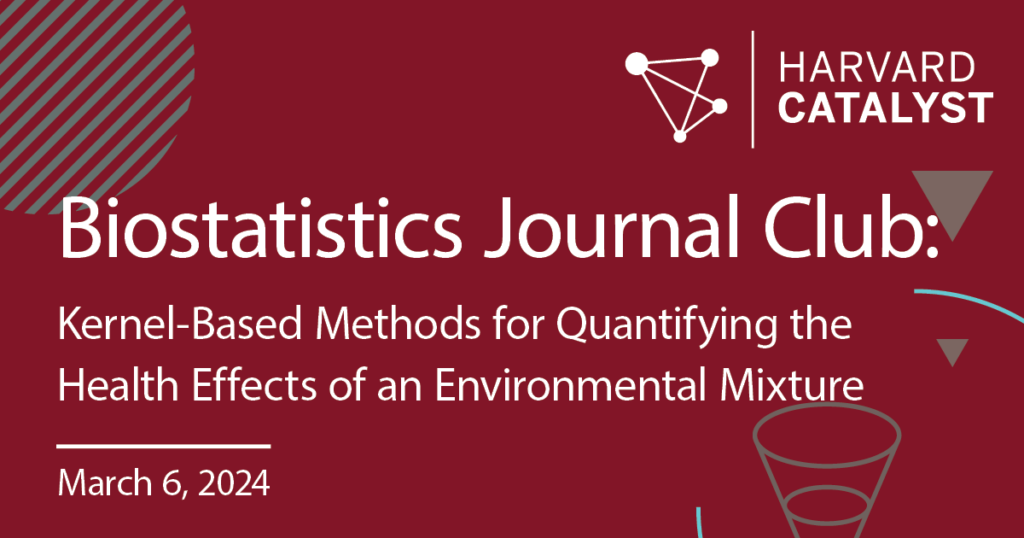Calendar
Biostatistics Journal Club: Kernel-Based Methods for Quantifying the Health Effects of an Environmental Mixture – March 6

Biostatistics Journal Club: Kernel-Based Methods for Quantifying the Health Effects of an Environmental Mixture
An important goal of environmental health research is to assess the risk posed by mixtures of environmental exposures. Two popular classes of models for mixtures analyses are response-surface methods and exposure-index methods. Response-surface methods estimate high-dimensional surfaces and are thus highly flexible but difficult to interpret. In contrast, exposure-index methods decompose coefficients from a linear model into an overall mixture effect and individual index weights; these models yield easily interpretable effect estimates and efficient inferences when model assumptions hold, but, like most parsimonious models, incur bias when these assumptions do not hold.
In this talk, Brent Coull of Harvard T.H. Chan School of Public Health will review the advantages and disadvantages of both classes of models. This discussion will then propose Bayesian kernel-based multiple index models as a framework that contains response-surface and exposure-index models as special cases, thereby unifying the two analysis strategies. This unification increases the range of models possible for analyzing environmental mixtures and health, allowing one to select an appropriate analysis from a spectrum of models varying in flexibility and interpretability. In an analysis of the association between telomere length and 18 organic pollutants in the National Health and Nutrition Examination Survey (NHANES), the proposed approach fits the data as well as more complex response-surface methods and yields more interpretable results.
Required Reading:
Speaker:

